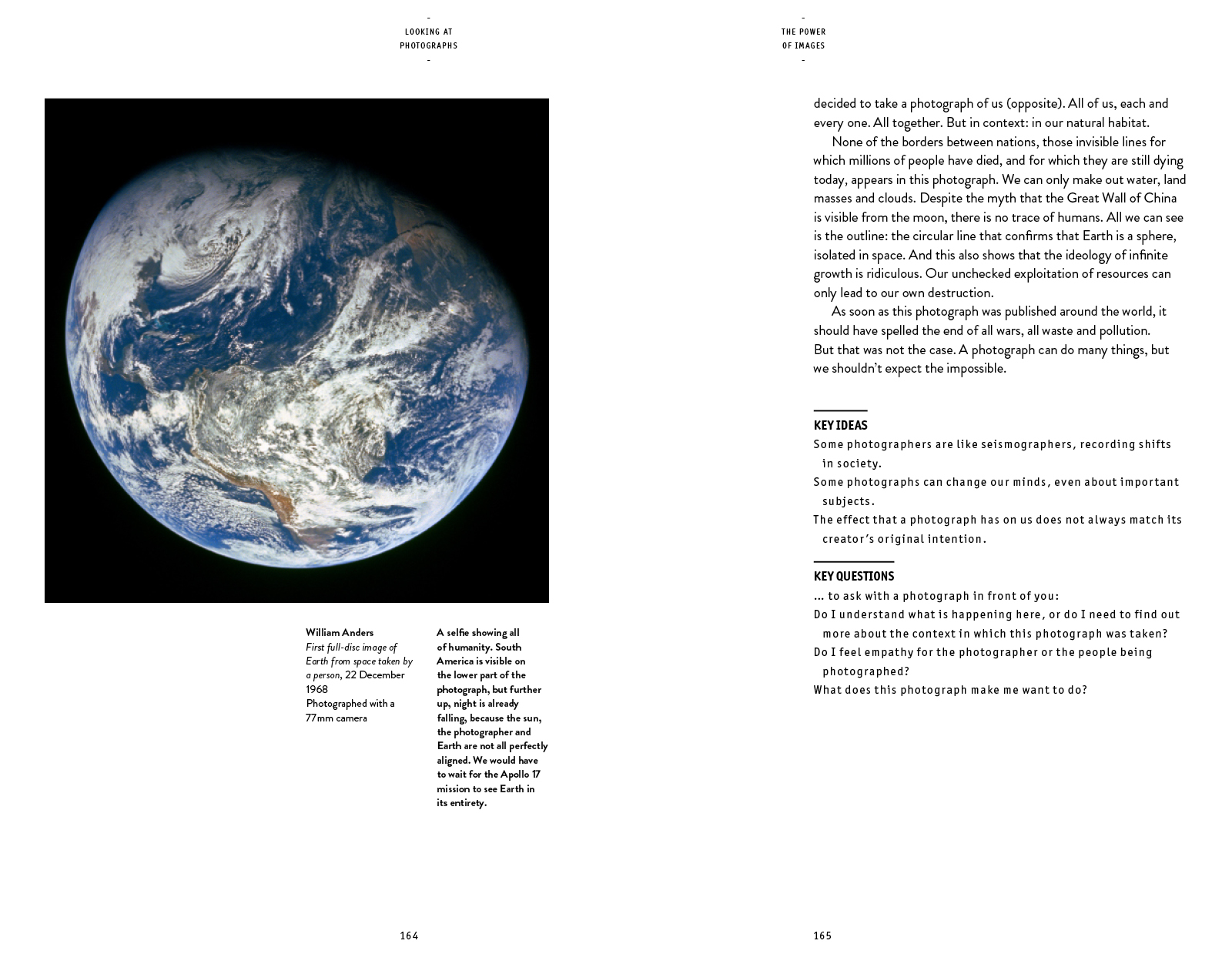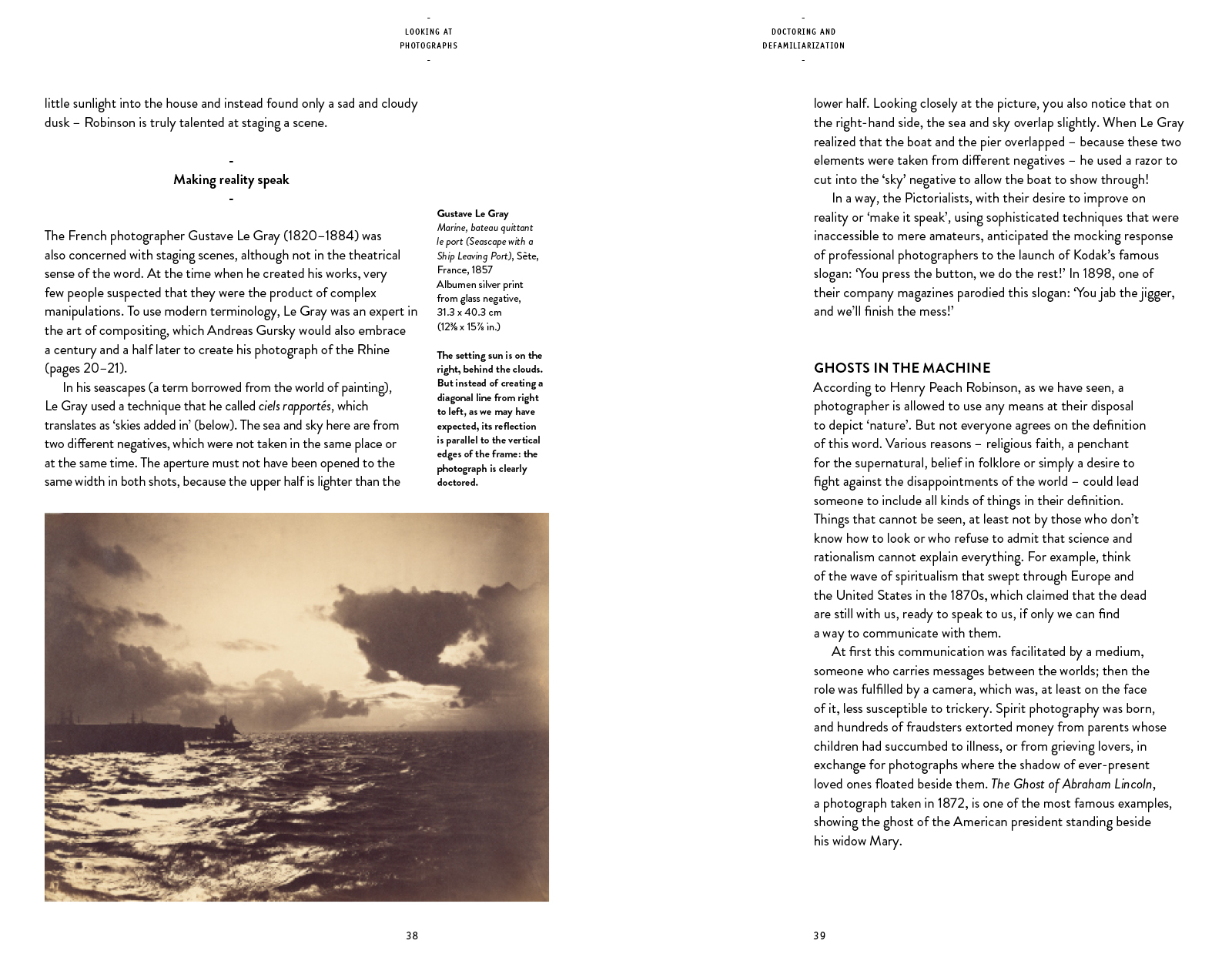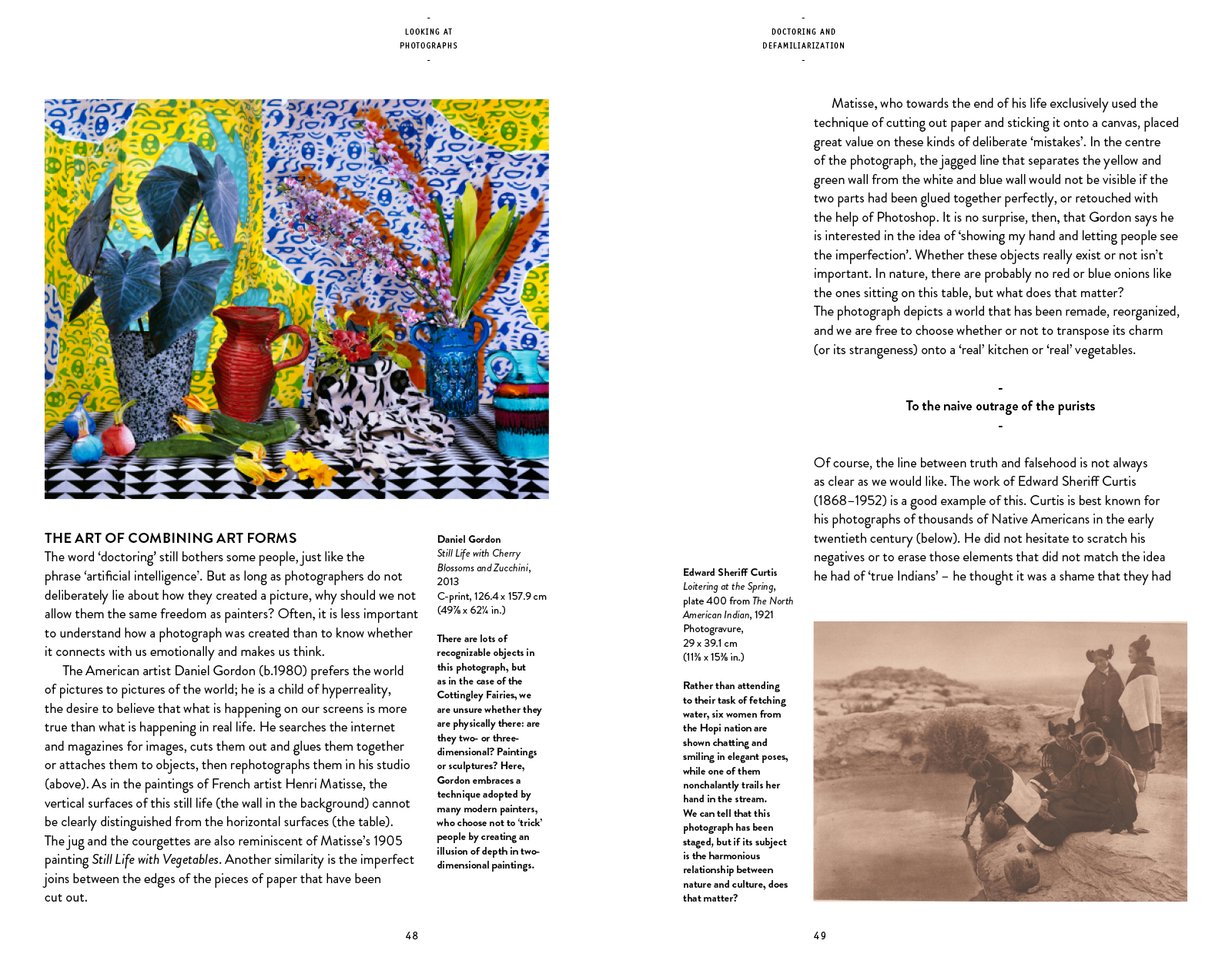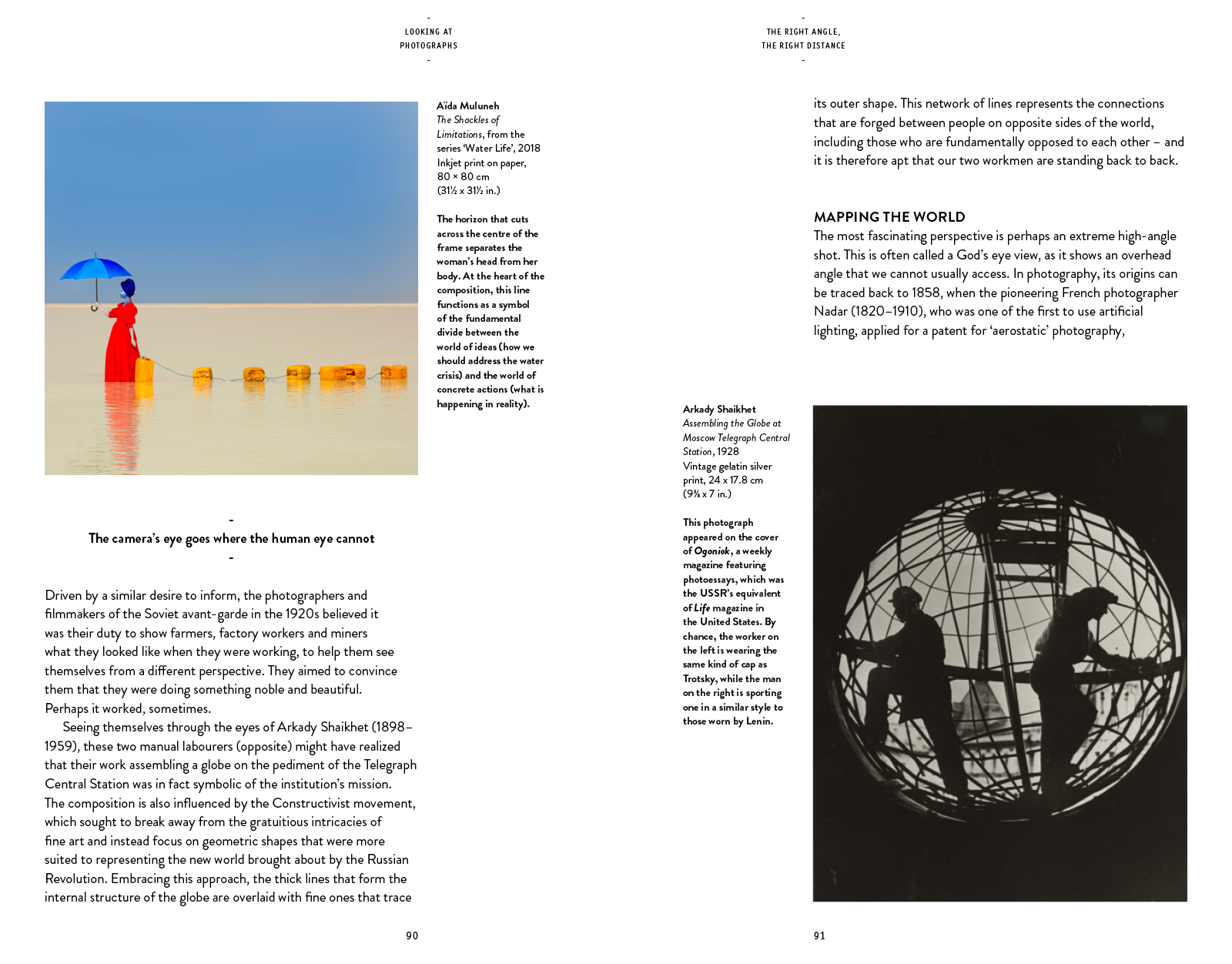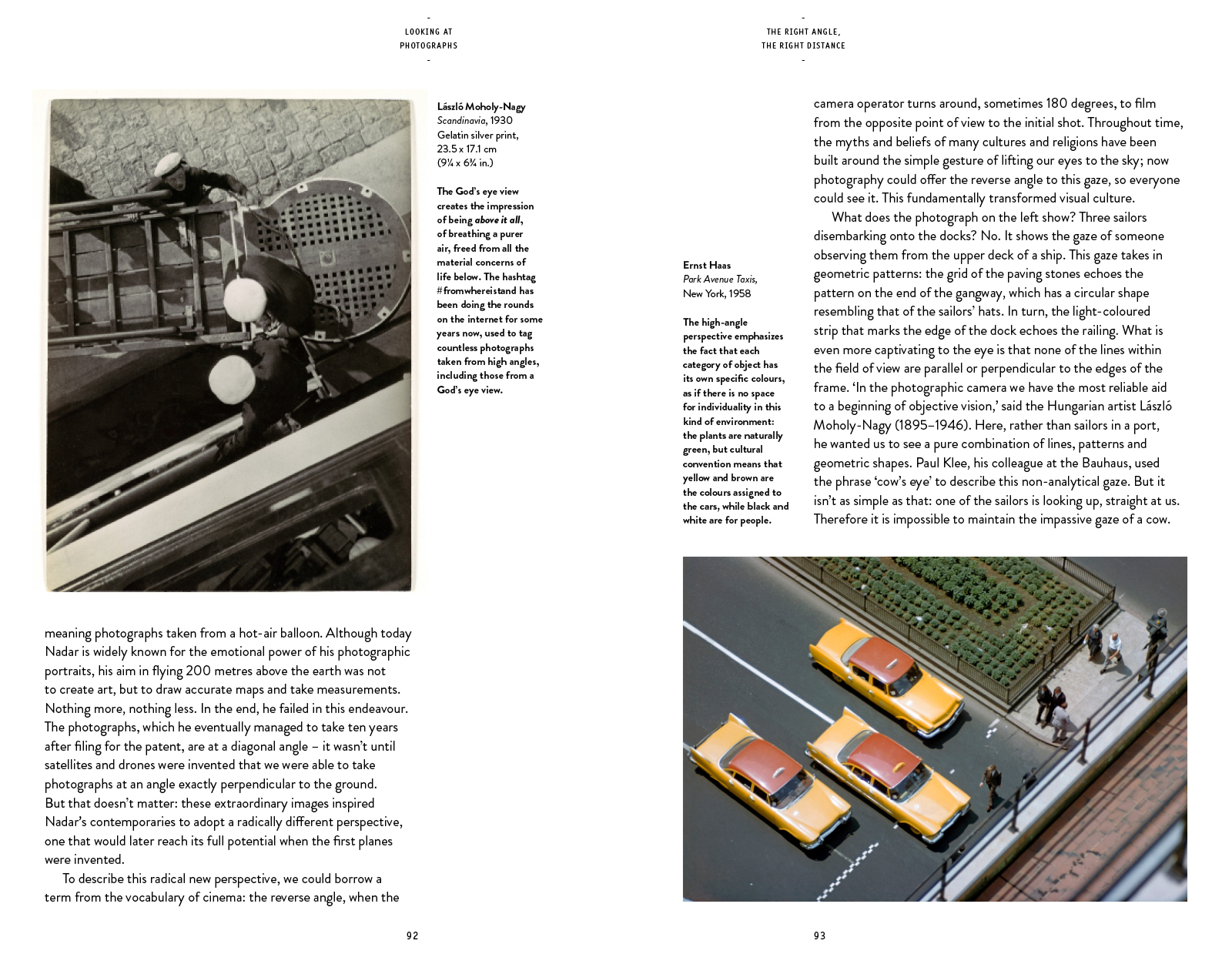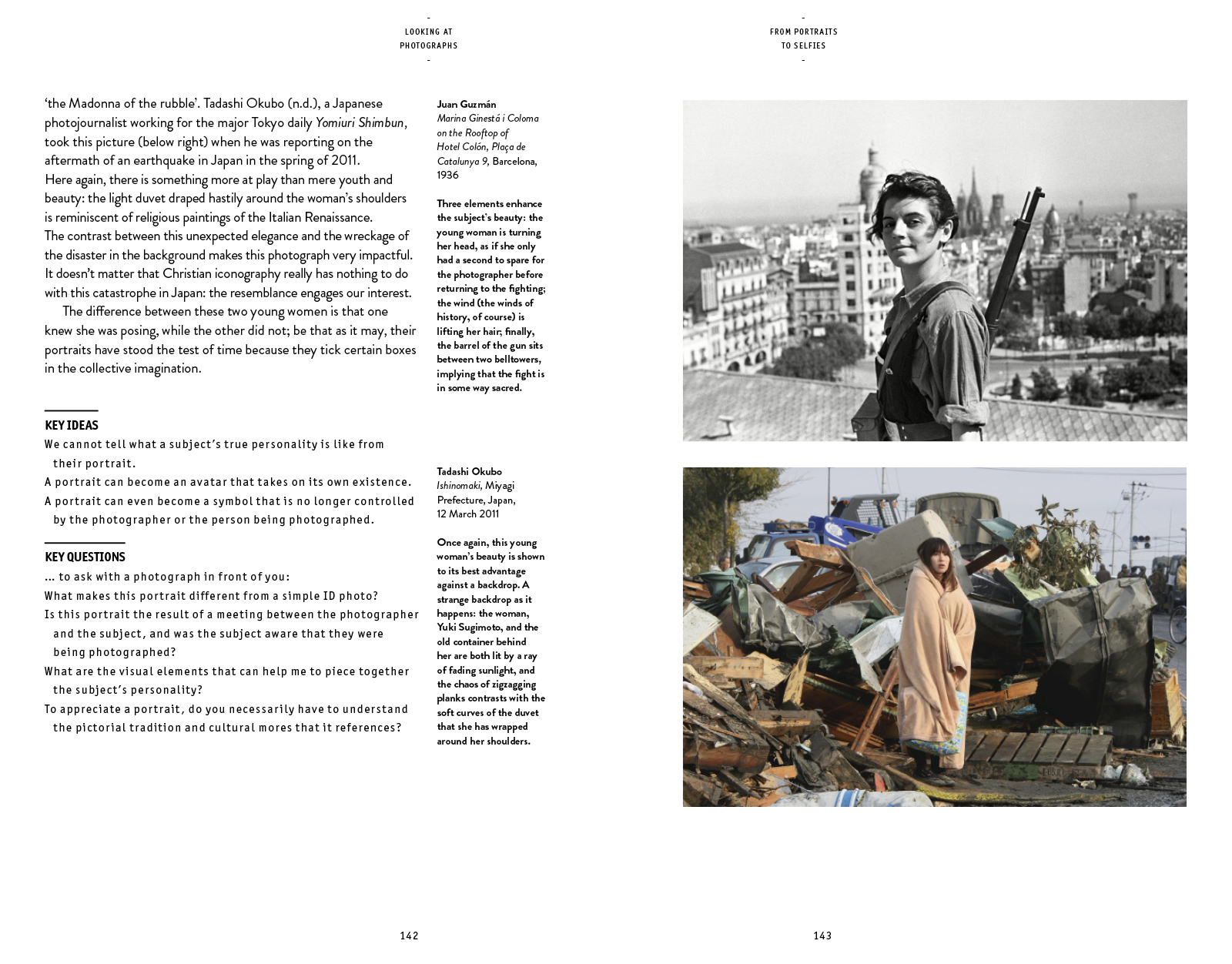Photographs, even the most iconic, often have something seemingly obvious about them. They appear to represent the "real" world and our first instinct is that they can be easily interpreted, which is not always the case with paintings. But this sense of familiarity with photography can lead to ambiguities. Looking at Photographs outlines key approaches to help us understand why a photograph captures our attention and moves us. This introductory reference is structured to help you develop new and more in-depth ways of looking at images, whether as a viewer or practitioner—or just out snapping with your smartphone.
Everything counts in a good photograph, even down to the smallest details. Across seven chapters, visual culture expert Laurent Jullier discusses themes and concepts that are essential to understanding the medium, including photography as a reflection of reality; manipulation and defamiliarization; focus, perspective, and space; time and the moment; identity, portraits, and selfies; and the power of images.
With examples drawn from across the world and throughout the history of photography, from Louis Daguerre to Julia Margaret Cameron, László Moholy-Nagy, Dorothea Lange, Andreas Gursky, Hiroshi Sugimoto, Dayanita Singh, Eva Woolridge, and many others; in addition to a helpful glossary of terms, Looking at Photographs is not just about learning "how to read" photographs, it is about knowing how to ask the right questions when you look at images.
Contributors
Laurent Jullier
Author
Laurent Jullier is a professor at the Institut Européen de Cinéma et d'Audiovisuel, University of Lorraine; director of research at the Institut de Recherches sur le Cinéma et l'Audiovisuel, Sorbonne Nouvelle, Paris; and a member of the Advanced Research Team on the History and Epistemology of Film and Moving Image Study at Concordia University, Montreal. Editor of the journal Mise Au Point, he teaches visual culture studies and has written several books and articles, including Une Brève Histoire du Cinéma: 1895-2020 (coauthored) and L'Analyse de Séquences.

